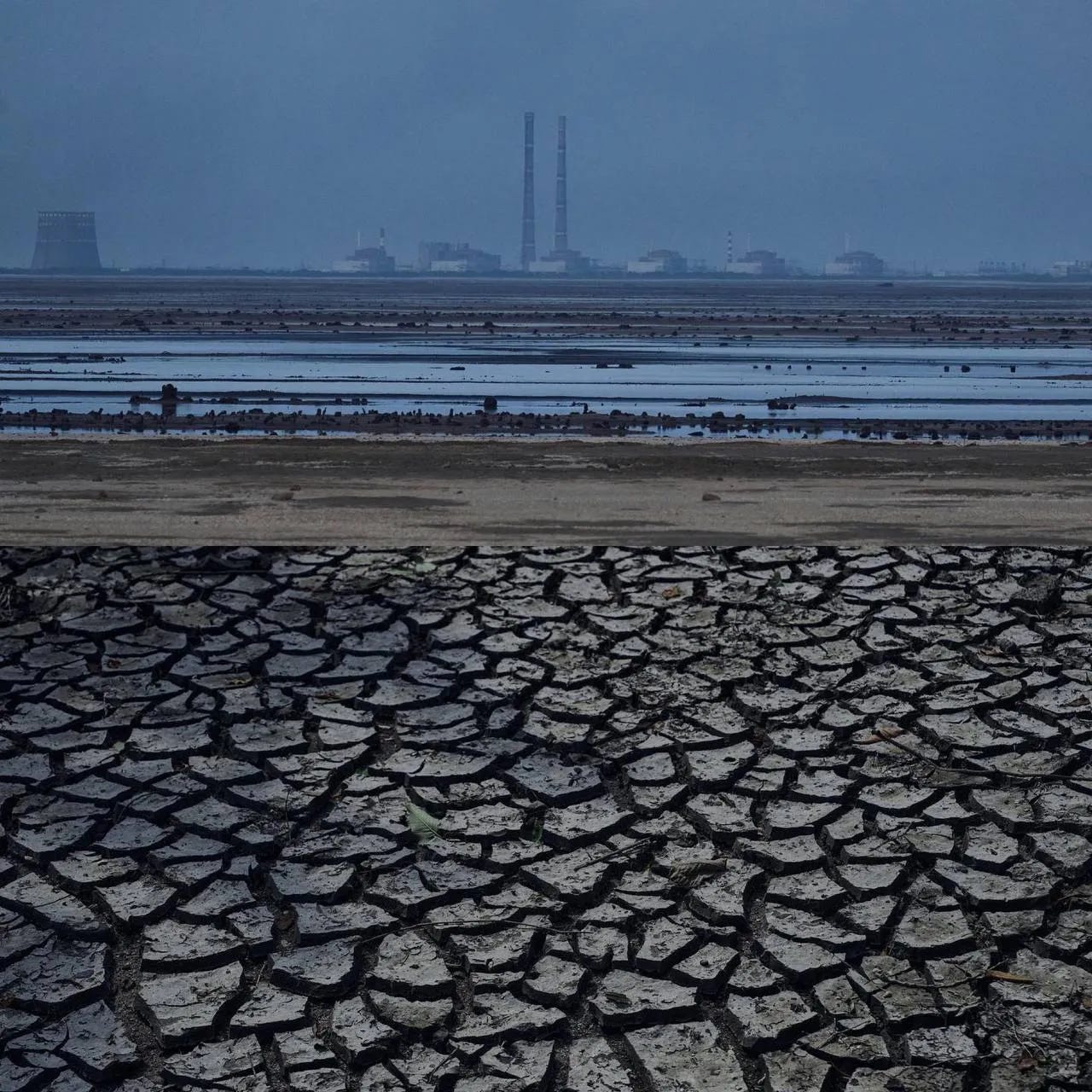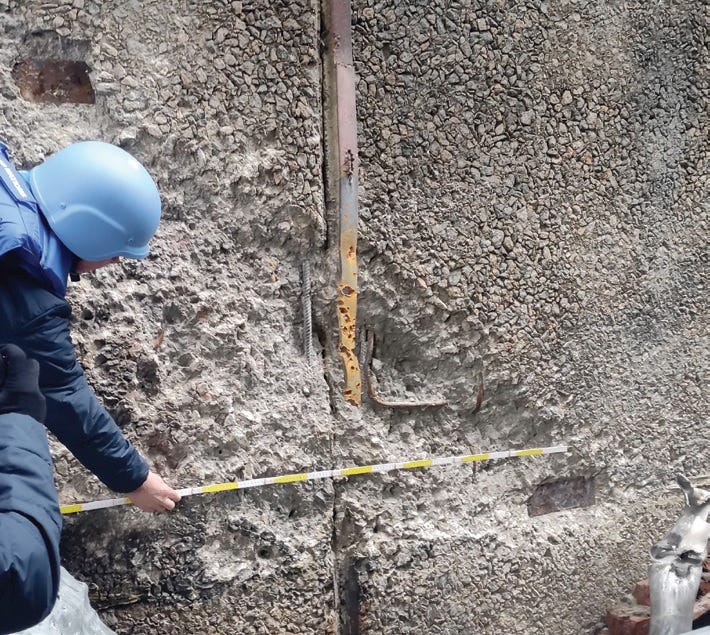Thoughts on ZNPP
Attack...Explosion...Doomsday...Nothing?
I have not had the time to thoroughly investigate all of the possibilities that have arisen around the ZNPP, and the claims made by Ukraine and Russia about the intentions of the other. However, there are some glaring discrepancies in the statements made, and I wanted to post some thoughts about the potential outcomes of the scenarios that have been proposed.
Introduction
Much has been written in the mainstream media about the Zaporizhzhia Nuclear Power Plant in Energodar, Ukraine. Several items in particular have received the most attention (note: I do not judge the veracity of the following claims):
1. Russian officials claim that Ukrainian forces are, and have been, shelling the nuclear power plant regularly, and a breach of a wall of any of the containment buildings that surround each reactor could cause a spread of radioactive material that would be carried by the wind over a significant geographical area. In a different twist, Ukraine forces will launch missiles at the ZNPP reactor(s), with the missiles containing spent nuclear fuel (waste) that is radioactive. Ukraine will claim that Russia blew up the reactor to create a “false flag” situation, which would result in major condemnation of Russia, and possible triggering of Article 5 of NATO.
2. Ukrainian officials say that Russia has mined at least one of the nuclear reactors at the plant, and Russia plans to detonate the explosives, spreading radioactive material over a large geographical area (“dirty bomb”), and blame the war crime on Ukraine in a “false flag” operation.
3. A number of (Ukrainian) bloggers have shown pictures of the now-dried bottom of the Kakhovka Reservoir, with the claim that it would be easy for Ukrainian military to carry out a massive attack on the Russian forces guarding the ZNPP. Capture of the ZNPP by Ukrainian forces would be a major PR victory that could bolster Ukraine’s chance of receiving further monetary support from the West, and the timing (around the upcoming NATO summit in Vilnius) is critical.
4. In addition to #3 above, some now claim that the Ukrainian forces will cross the (dry) Kakhovka reservoir with massive forces in order to attack Russian defenses Southeast of Energodar and make their breakthrough all the way to the Sea of Azov. That would be a spectacular “win” for Ukraine’s prospect of continued funding from the West.
5. Finally, it is now rumored that Ukraine and Russia are engaged in “secret” negotiations, either bilaterally or with intermediaries, and it is stated that Russia is willing to give up ZNPP as part of a negotiated settlement and end of hostilities.
Discussion
● Let’s start with number 5, because, if true, it would make all the other scenarios irrelevant in a sane world. Based on the public announcements by both sides, it is difficult to believe that negotiations would have reached such a point by this time. In order for Russia to offer any concession, Ukraine would have had to offer a number of concessions that they have, up to now, refused to even discuss. Based on my limited knowledge, I give this little credibility.
● Next, let’s lump numbers 3 and 4 together, because they both are predicated on the ability to cross the “dry” lake bed of the Kakhovka Reservoir. Here, we will have to learn a little bit about agronomy. Ukraine has some of the most fertile cropland in the world. In fact, Ukraine is called the breadbasket of Europe. The reason for this is the “black soil”, called Chernozem, that predominates in much of the Ukrainian geography. Chernozem soils of varying composition are found in much of Ukraine, and the “normal” Chernozem is found in the region where the Kakhovka Reservoir is located. The depth of the Chernozem soil there is approximately 1.5 meters.
Properties of Chernozem relevant to our discussion are moisture retention and texture. Chernozem is very soft, and in rainy weather it becomes too soft to drive over, even with a tracked vehicle. But the key property in regards to using the reservoir bottom for military forces to cross over to Energodar is the water retention. A number of TG channels have shown pictures of the “dry” reservoir bottom, with a cracked, dry surface.
However, I have not seen any pictures that include vehicles traversing the lake bed. One picture did show footprints from a person walking, but the “dry” surface was markedly disturbed, and the person’s footprints were driven several inches into the ground, with visible mud kicked up with each step.
I believe that the appearance of dryness on the surface is misleading, because the Chernozem is hydrophilic, and stays quite moist just under the surface. The Kakhovka Reservoir has been filled to a level as high as 26 meters of water for over 60 years. Over this time period, the Chernozem has become saturated with water down to the level of hydrophobic soil (clay). It would probably take months for the soil to dry sufficiently to allow heavy vehicles to pass unimpeded.
I would predict that any heavy vehicles that attempt to cross the lake bed will quickly become intractably stuck, and movement of military forces across the lake bed is likely so difficult as to allow only a slow, painful movement toward Energodar. Others have pointed out that the paths to Energodar have no chance for concealment or cover, and the troops would be easy targets for a defensive force at Energodar. Even easier if they are stuck!
It would seem that the Ukrainian military would want to trumpet the fact that they can easily pass over the “dry” lake bed to conduct an attack, but I have seen no such demonstration. If anyone has seen such evidence, please let us know in the comments section.
And finally on this topic, would Ukrainian soldiers agree to attack, or even pass in the vicinity of a nuclear plant that is mined by the enemy, and ready for a disastrous explosion at any time?
● Now let’s (briefly) discuss item number two. Ukrainian claims of Russian mining of the plant are contradicted by statements made by the IAEA inspectors who have been to the plant, along with the head guy, Grossi. In fact, IAEA inspectors remain at the plant now on a continuing basis, and that seems to put an end to the fiction that Russia has mined the plant.
● And now to item number one: Ukraine has shelled the ZNPP frequently, according to Russian sources. And Ukraine believes that if they can breach the wall of one of the (six) containment buildings, the result will be an explosive, widespread distribution of radioactive material. Ukraine would then call for engagement of Article 5 (NATO).
Well, nuclear containment buildings are purposely designed to withstand huge forces without a breach in the walls. The ZNPP was built in Soviet times, and the strength of the construction was/is high. The results of Ukrainian attacks on the plant are shown in the picture below, and show minor damage after missile/artillery strikes. The walls of the containment buildings are 1.5 meters thick, and heavily reinforced with steel. In the U.S., containment buildings have been built to withstand the force of a fully loaded passenger jet striking the wall. I suspect that the ZNPP containment buildings are of similar construction.
Further, breaching the wall will not result in anything unusual when the reactor is in cold shutdown mode. Simplicius76 has a good description of the reactors at ZNPP, and you can see from his description and graphics that breaching the wall would have little effect on a cold reactor. BTW, all six of the ZNPP reactors are now in cold shutdown mode.
So it seems that Ukraine would not be able to claim war crimes against Russia by destroying the wall of one of the reactor containment buildings.
That brings up a twist in the plot by Ukraine. They apparently plan to use a “dirty” missile strike to spread radioactive material, mimicking the result of an internal explosion as if Russia had detonated the explosives that they supposedly “mined” the plant with.
There are a few major problems with this. If the containment wall is not breached and radioactive material is spread, where did it come from? Obviously, from the missile. In addition, spent nuclear fuel (which would be used in a dirty bomb) has characteristics quite different from fuel that is in the middle of its life cycle. Also, each nuclear plant has different design and operating characteristics, which result in different characteristics of the radioactivity of the spent fuel that results from operations. I don’t see how Ukraine could fool the international observers in this scenario.
What is Ukraine up to in this whole episode? Other than fear-mongering to try to get the Russians to abandon ZNPP out of fear of a dirty bomb strike, I don’t see any logical reason for their machinations.
As Always…
If you like this article, please consider buying me a coffee. Even a short piece like this takes time to verify information and make sure that conclusions are consistent. My next full article will be about Crude Oil and its role in the current geopolitical situation that we find ourselves in. Thank you!





Excellent article. Thanks.
I should learn from it to also start writing from time to time short updates instead of books :))))
Succinct and a great read! The only way for ZNNP radiation to escape: disrupt the cooling below the reactors and breech the containment building down to the pressure vessel. Fat chance. Maybe the above ground storage containment, but they should be similarly protected.
Final thought: why would Russia contaminate their own land? Unless they really liked the blue haired women with blonde eyes from Chernobyl 😃
Cheers from Tokyo!